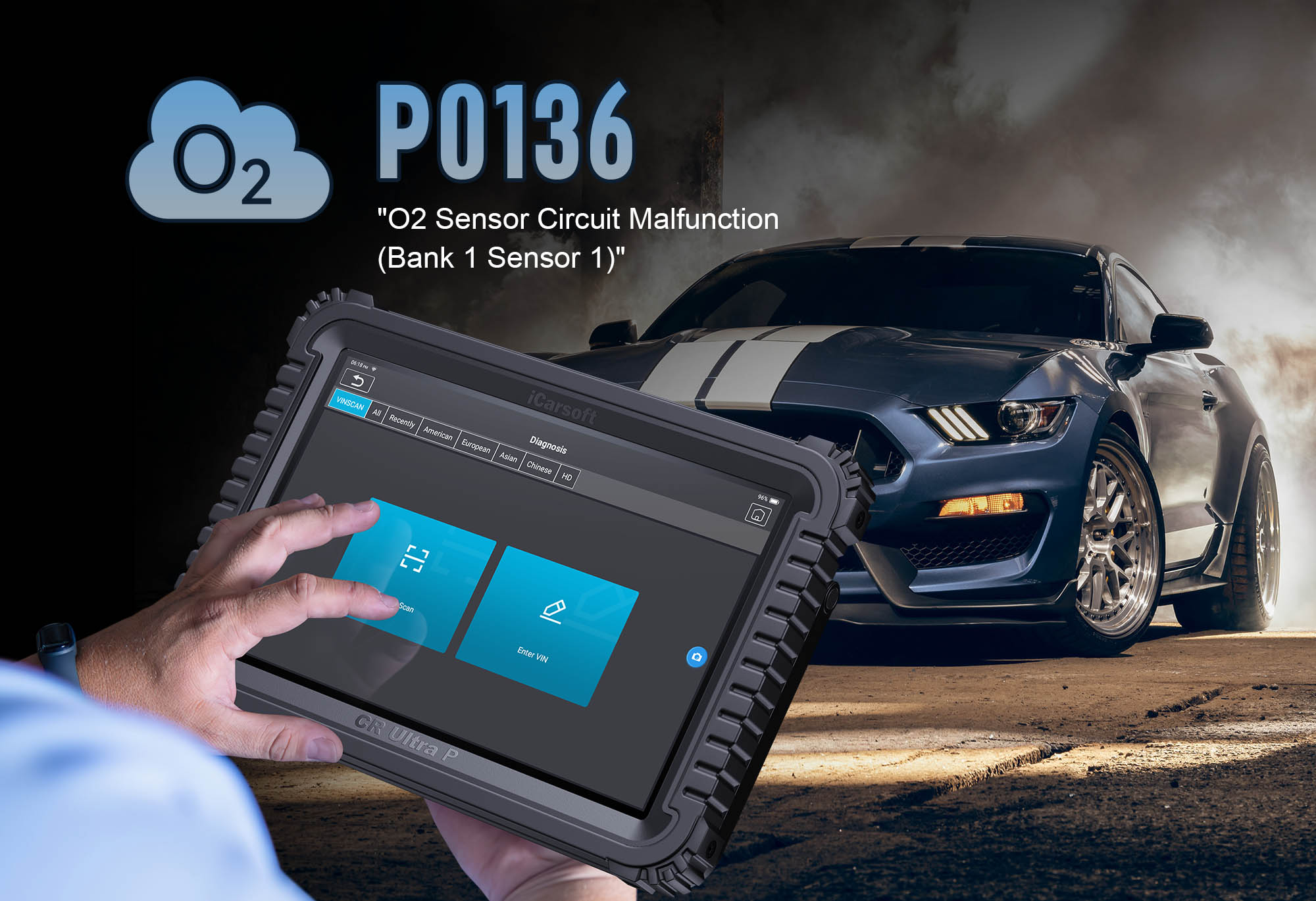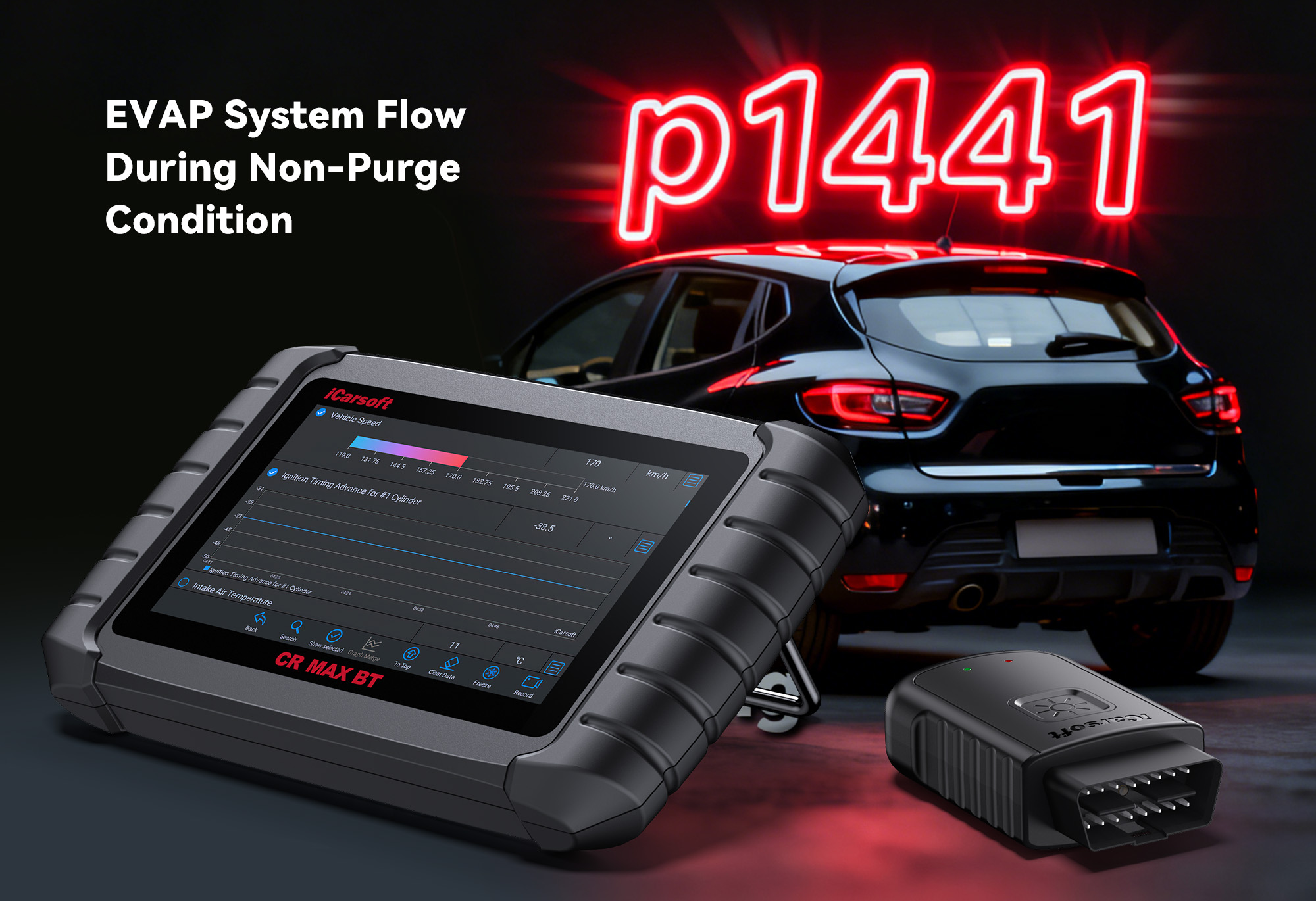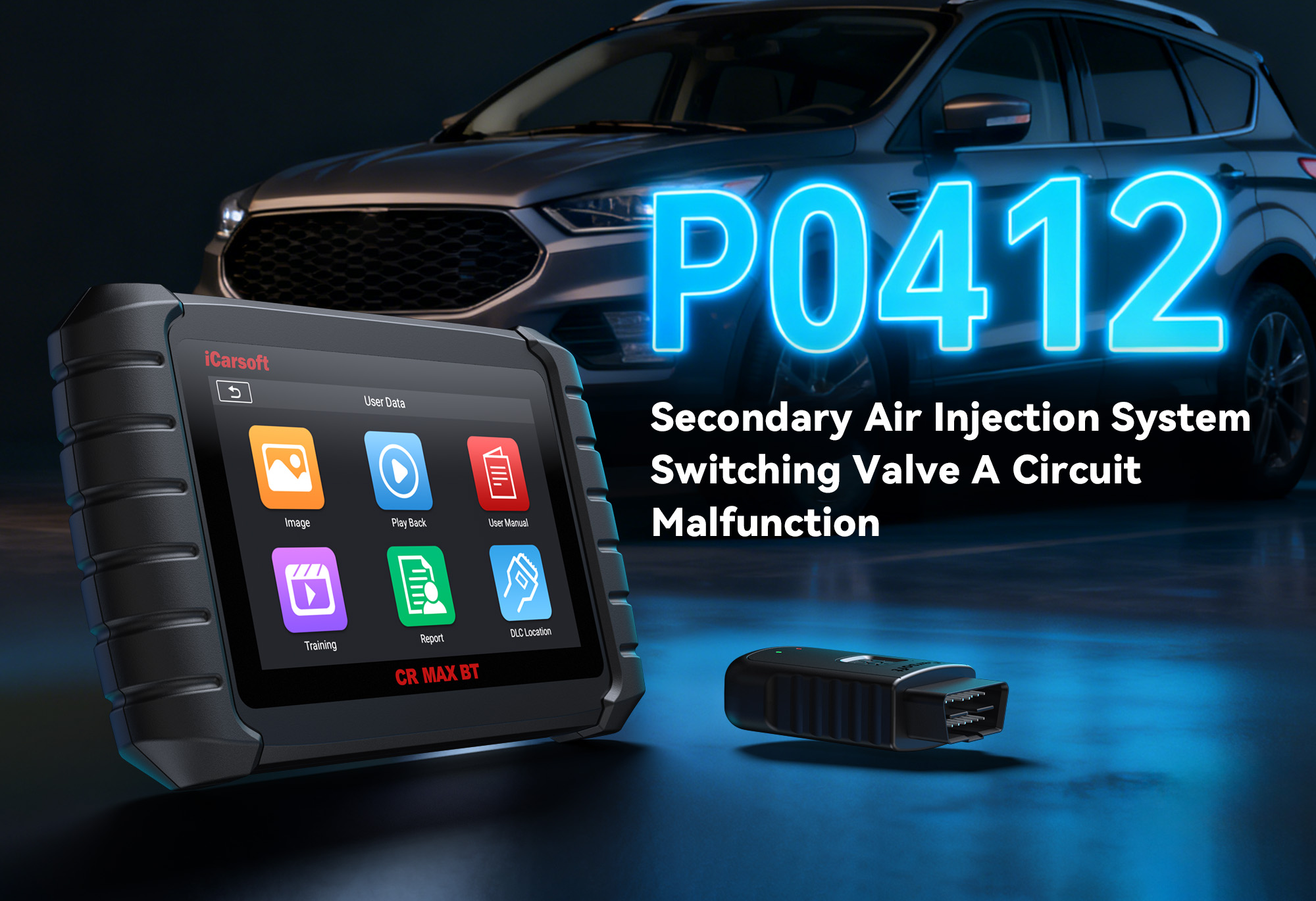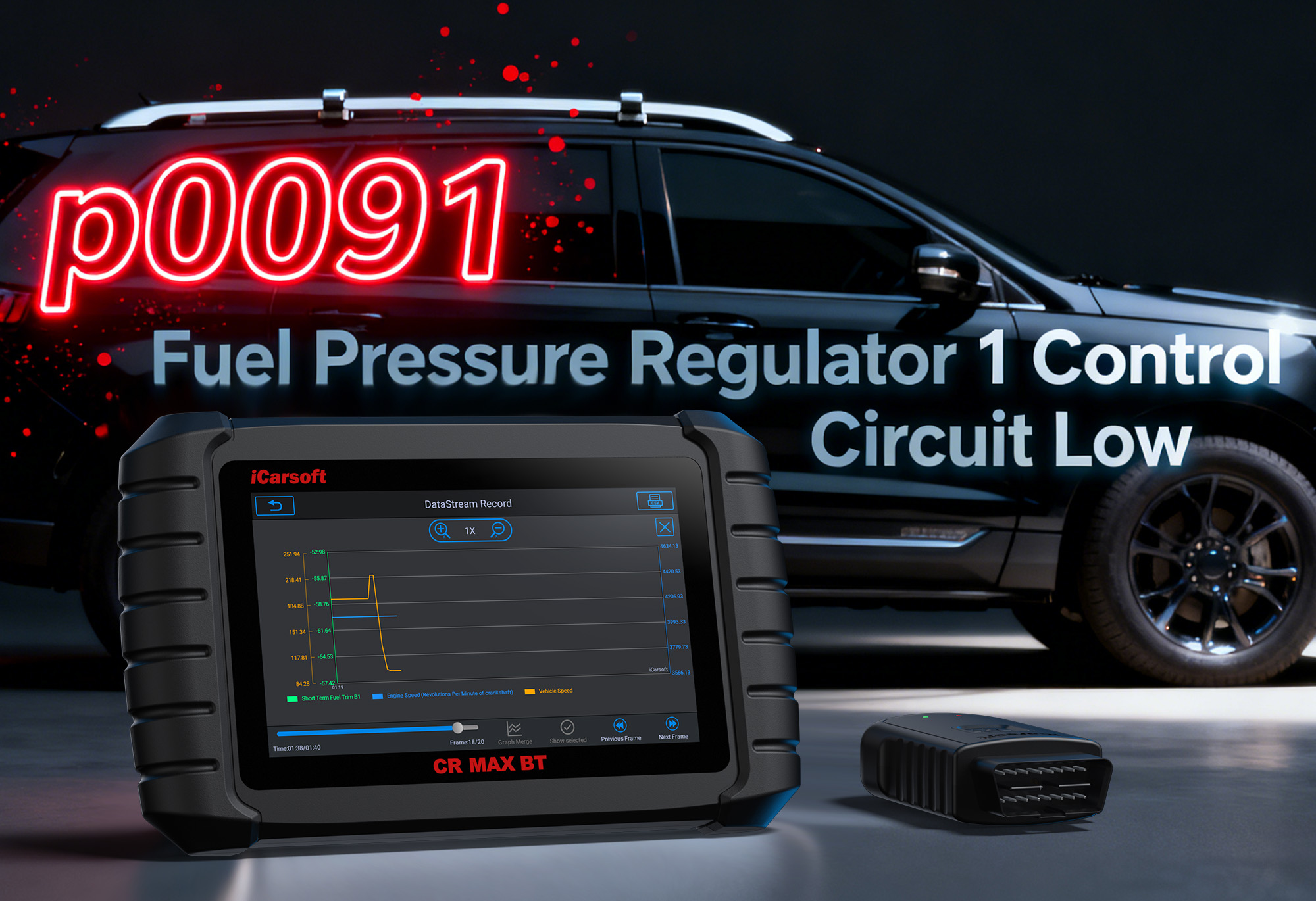Understanding the P0136 Code: O₂ Sensor Circuit – Bank 1 Sensor 2
Understanding the P0136 Code: O₂ Sensor Circuit – Bank 1 Sensor 2
When your vehicle’s check engine light turns on and a scan returns code P0136, it means "O₂ Sensor Circuit Malfunction (Bank 1, Sensor 2)." This downstream oxygen sensor—located after the catalytic converter on the bank containing cylinder #1—has registered a voltage issue. It's essential for monitoring exhaust emissions and catalyst efficiency.
What Does P0136 Mean?
-
P0136: O₂ Sensor Circuit Malfunction (Bank 1, Sensor 2).
-
Indicates a voltage issue with the downstream oxygen sensor located after the catalytic converter.
-
"Bank 1" refers to the cylinder bank containing cylinder #1; "Sensor 2" denotes the downstream sensor after the catalytic converter.
-
This sensor monitors exhaust gases after they've passed through the catalytic converter to assess its efficiency.
Common Symptoms of P0136
-
Illuminated Check Engine Light (MIL).
-
Poor fuel economy due to incorrect air-fuel mixture adjustments.
-
Rough idle or mild misfires during acceleration.
-
Higher emissions output, potentially causing failure of emissions tests.
-
In some cases, reduced engine performance and responsiveness.
Top Causes of the P0136 Code
|
Cause
|
Description
|
|
Faulty O₂ sensor
|
Worn or contaminated sensor unable to produce proper voltage signals
|
|
Wiring issues
|
Corroded, shorted, open, or high-resistance wires in the sensor circuit
|
|
Connector problems
|
Damaged, loose, or corroded electrical connectors
|
|
Exhaust leaks
|
Leaks before or near the downstream sensor affecting readings
|
|
Catalyst issues
|
Degraded catalytic converter causing abnormal exhaust composition
|
|
PCM fault
|
Rare, but a faulty powertrain control module can misinterpret signals
|
Diagnosing and Fixing P0136 Efficiently
Follow these steps for accurate diagnosis and repair:
-
Confirm the code with a full-featured scan tool
Use live-data viewing to verify low or irregular voltage readings from the Bank 1 Sensor 2.
-
Check wiring and connectors
Inspect the entire connector harness—clean corrosion, repair broken pins, and replace damaged wires as needed.
-
Inspect for exhaust leaks or catalyst issues
Perform a smoke test or visual check for exhaust leaks. A degraded catalytic converter can also trigger this code.
-
Test and replace the O₂ sensor if necessary
If the circuit and exhaust system check out, replacing Bank 1 Sensor 2 is usually the solution. In rare cases, PCM software updates or replacement may be required.
-
Clear codes and verify repair
After repairs, clear the code and take a test drive to ensure it doesn't return.
Why the iCarsoft CR Ultra P Fits Perfectly for P0136 Fixes
When diagnosing or repairing oxygen sensor faults, the CR Ultra P OBD2 scanner provides critical advantages:
Live-data O₂ monitoring
View real-time voltage swings from the oxygen sensor to identify irregular patterns
In-depth code information
Detailed explanations of P0136 and step-by-step guidance for relevant systems
Graphing and freeze-frame
Visual data representation simplifies spotting intermittent issues and error triggers
Programming capabilities
ECU control features help reset readiness monitors after repairs are completed
Step-by-Step: Using the CR Ultra P to Resolve P0136
-
Connect and read codes
Plug in the scanner, clear historical codes, and re-scan to confirm P0136 or related issues.
-
Graph live O₂ sensor voltage
Monitor Bank 1 Sensor 2 readings for flat-lining or abnormally stuck values.
-
Check the heater circuit
Use the CR Ultra P to verify proper heater operation; low resistance may indicate internal sensor damage.
-
Repair based on readings
Address wiring issues, connector problems, or replace the sensor according to diagnostic data.
-
Clear codes and re-verify
After repairs, clear fault codes and perform test drives until the CR Ultra P shows no abnormalities.
Maintenance & Prevention Tips
-
Periodically monitor downstream sensor voltage using your CR Ultra P's live data mode.
-
Maintain exhaust system integrity and ensure proper battery-ground connections (rust or leaks often cause voltage issues).
-
Replace oxygen sensors according to the manufacturer's schedule—typically every 60,000–100,000 miles.
-
Run emissions self-tests with the CR Ultra P after service to ensure system readiness.
-
Address other exhaust-related codes promptly to prevent damage to the O₂ sensor.
Final Take: Keep Your Engine Healthy
The P0136 code highlights a critical sensor in your emissions system. Left unchecked, it can lead to:
-
Wasted fuel and increased operating costs due to inefficient fuel mixture.
-
Failed emissions inspections and potential legal issues in regulated areas.
-
Potential catalytic converter damage from running too rich for extended periods.
Solving it effectively requires a high-resolution scan tool like iCarsoft's CR Ultra P—with real-time monitoring, graphing, and reset capabilities tailored for oxygen sensor circuits.
If you want to stop guessing and start fixing, the CR Ultra P OBD2 scanner is the smart choice to diagnose and handle P0136 faults fast and accurately.
FAQs About P0136 Code
Q: Where is Bank 1 Sensor 2 located?
A: Bank 1 refers to the cylinder bank containing cylinder #1. Sensor 2 is the downstream sensor, located after the catalytic converter on that bank, monitoring exhaust gases exiting the catalyst.
Q: Can I drive with a P0136 code?
A: You can drive short distances, but prolonged operation may lead to reduced fuel economy and potential catalytic converter damage. It's best to address the issue promptly.
Q: How much does it cost to fix P0136?
A: Costs vary by cause—$50–$200 for a new oxygen sensor, plus labor. Wiring repairs may be less expensive, while catalytic converter issues would increase costs significantly.
Q: Will a P0136 code clear itself?
A: No, the code won't clear itself unless the underlying issue is resolved. Even then, you'll typically need a scanner to clear the code after repairs are made.
Q: Can a loose gas cap cause P0136?
A: No, a loose gas cap typically triggers evaporative emission codes (P0440 series), not oxygen sensor circuit codes like P0136.





